Bringing inclusion to every chair, one haircut at a time.
When you think about accessibility, a haircut probably isn’t the first situation that comes to mind. But for deaf and hard of hearing clients, a visit to the salon or barbershop can present unexpected barriers, from communication challenges to feelings of isolation in a space meant to be relaxing and empowering.
Recently, Leighton had a completely different experience during a haircut, one that left him feeling seen and included like never before. It showed us how small, intentional changes can transform a routine appointment into a moment of genuine connection.
Here are five key takeaways from his experience: what worked well, what we learned, and what we encourage both stylists and clients to consider to make haircuts more accessible for all.
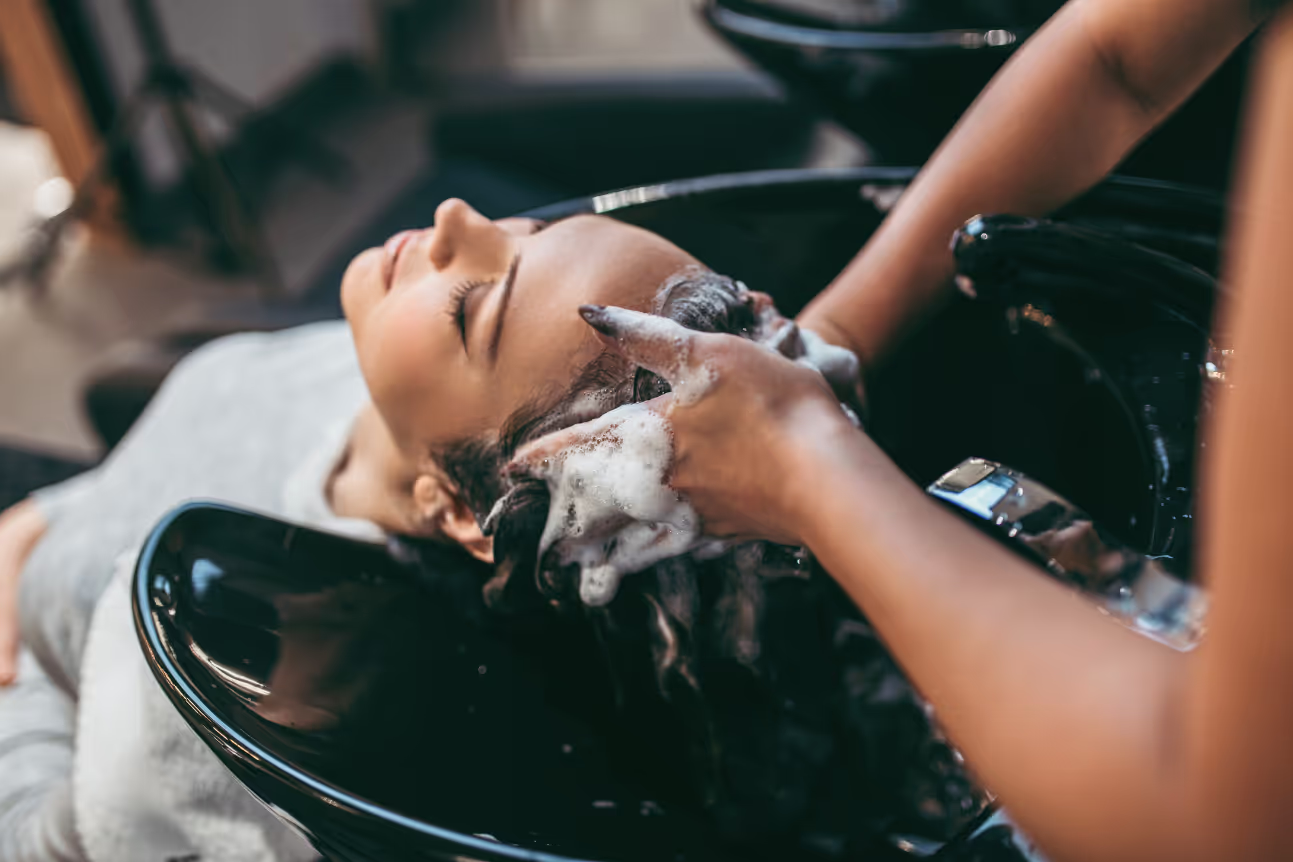
Every client has unique accessibility needs, and no two experiences are the same. Taking time to observe and understand each client’s individual situation sets a supportive, welcoming tone for the entire appointment.
Key factors to consider:
Our experience:
In Leighton’s case, he disclosed that he wears cochlear implant processors at the beginning of the appointment. The stylist not only listened but took it a step further by suggesting she start with the sides first so he could put his processors back on sooner. This thoughtful adaptation made him feel seen and supported right from the start.
Leighton’s experience:
I’ve never had a stylist take the initiative like that before. Usually, I feel like I have to explain myself or just stay quiet and hope for the best. This time, I felt understood from the moment I sat down, without even saying a word.
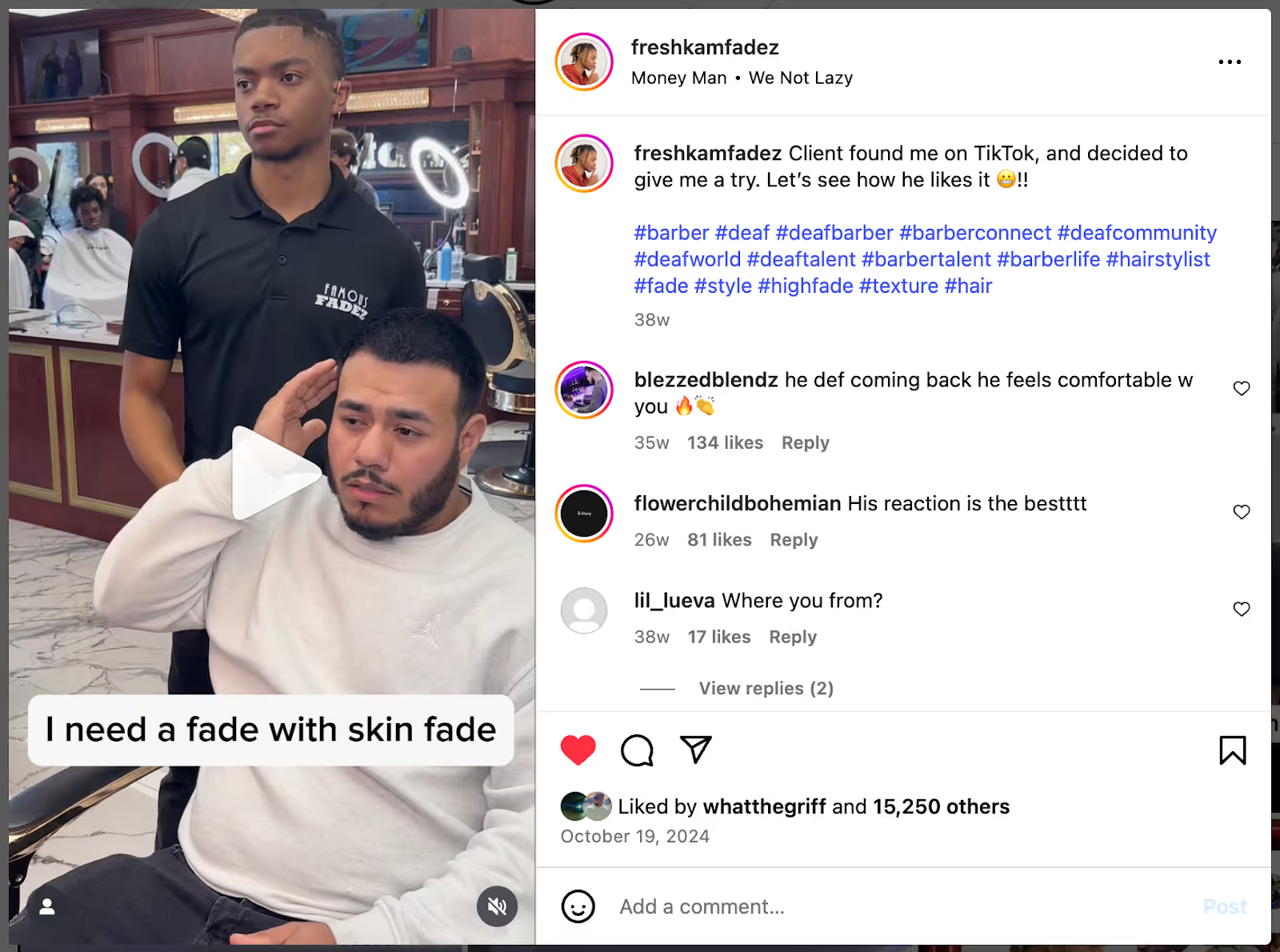
Communication is at the heart of any haircut. Whether discussing style preferences or sharing hair care tips, clear and accessible communication builds trust and ensures a more satisfying experience.
Key factors to consider:
Our experience:
Although the stylist didn’t explicitly ask Leighton about his preferred method, she naturally faced him and spoke clearly as soon as he put his processors back on. This choice turned what had often felt like a silent, isolating appointment into a lively, two-way conversation.
Leighton’s experience:
I was shocked. In every previous appointment, I had always sat in silence, just watching everyone else communicate freely with their stylists. This was the first time I felt like I could truly engage — to ask questions, share stories, and be part of the moment. It meant more to me than I can explain.
Mirrors aren’t just for checking the progress of a haircut. They can be an invaluable tool for facilitating visual communication and helping clients feel connected throughout.
Key factors to consider:
Our experience:
The stylist used the mirror intentionally, ensuring Leighton could always see her face before she spoke. This simple detail transformed the experience from passive to interactive, making him feel included at every step.
Leighton’s experience:
I depend so much on visual cues, and being able to see her face in the mirror changed everything. Instead of guessing what was happening behind me, I felt fully present and involved in each stage of the cut.
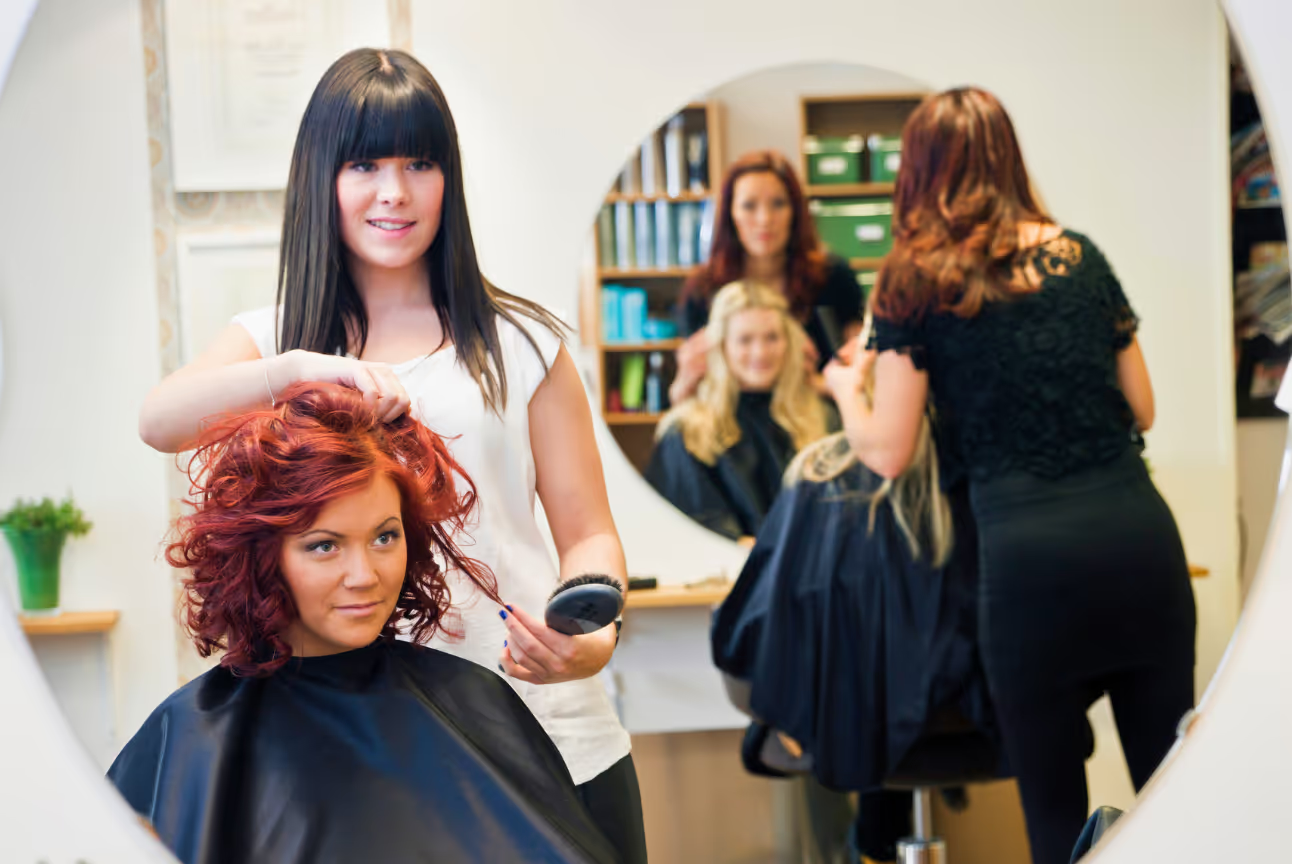
Some clients wear hearing aids or cochlear implants, which they may need or prefer to remove during a haircut. Recognizing this and thoughtfully adapting helps maintain comfort and inclusion throughout the experience.
Key factors to consider:
Our experience:
The stylist adapted by starting with the sides first so Leighton could put his processors back on midway through. Once they were back on, she maintained clear, direct communication for the rest of the appointment. This small change allowed him to stay engaged rather than sitting in silence.
Leighton’s experience:
For the first time, I didn’t have to “sit out” the appointment. Usually, once my devices are off, I’m left completely in the dark. I just sit there, disconnected, waiting for it to be over. This time, I got to participate, chat, and actually enjoy the process. It was empowering.
While it may seem obvious, confirming the client’s satisfaction and preferences at the end of the appointment is essential. Miscommunications can easily happen, especially when hearing barriers exist, so creating a final opportunity for feedback is crucial.
Key factors to consider:
Our experience:
The stylist took extra time at the end to review the finished look with Leighton, inviting feedback and ensuring he felt completely happy before leaving. This closing moment brought the whole experience full circle.
Leighton’s experience:
So often, I leave unsure if I actually got what I asked for or too nervous to speak up. This time, being invited to share my thoughts made me feel confident and truly heard. I left with a haircut I loved and a sense of genuine connection.
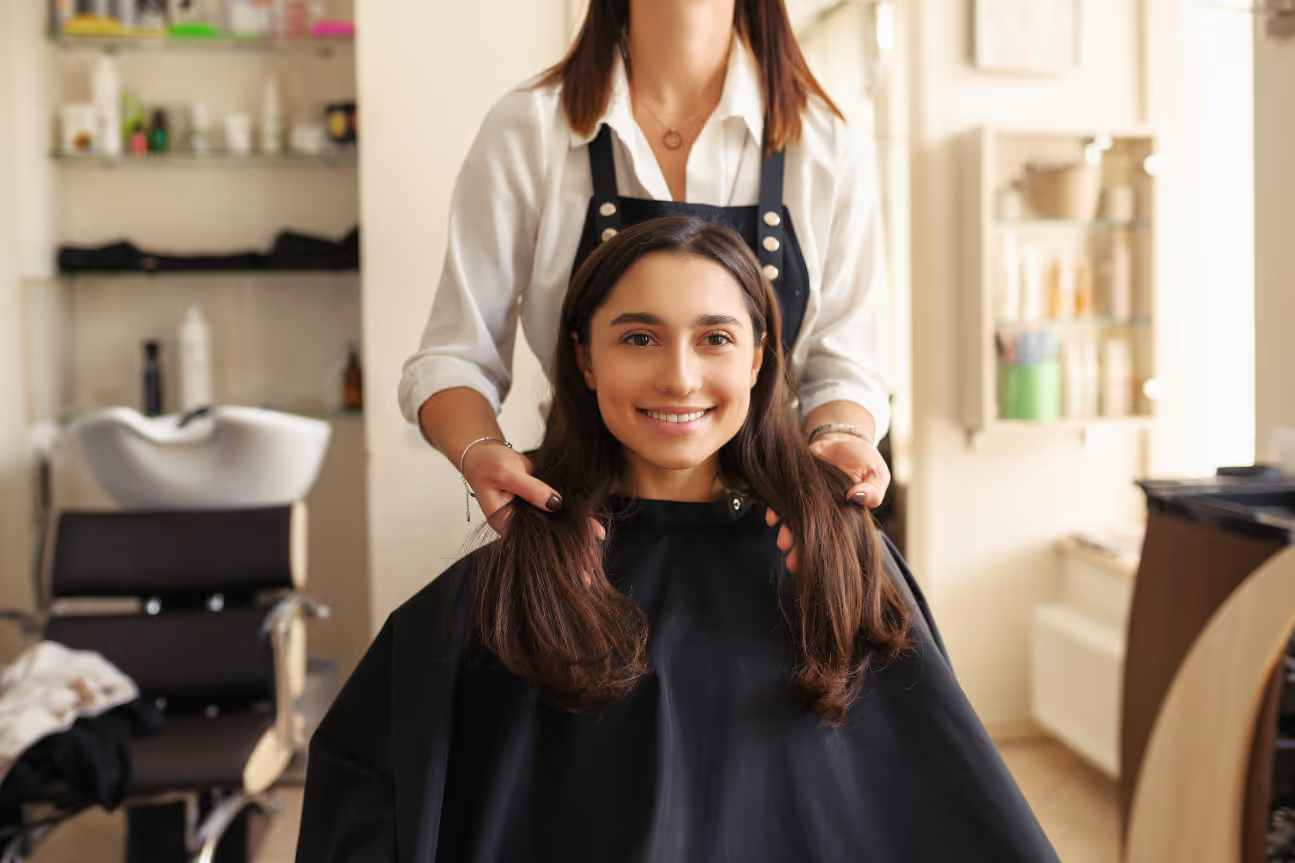
A haircut is more than just a routine appointment. It’s a chance to feel good about yourself, connect with another person, and feel truly seen. By taking small, intentional steps, stylists can create an environment where every client feels included, empowered, and cared for.
Leighton’s experience reminded us that accessibility isn’t just about physical ramps or written policies. It’s about human connection, thoughtful observation, and genuine care. With a little intention and openness, every chair can become a more welcoming place for all.
Want to see this in action? Check out our social media post for behind-the-scenes moments from Leighton’s appointment, and join the conversation on how we can make everyday experiences more accessible for everyone.
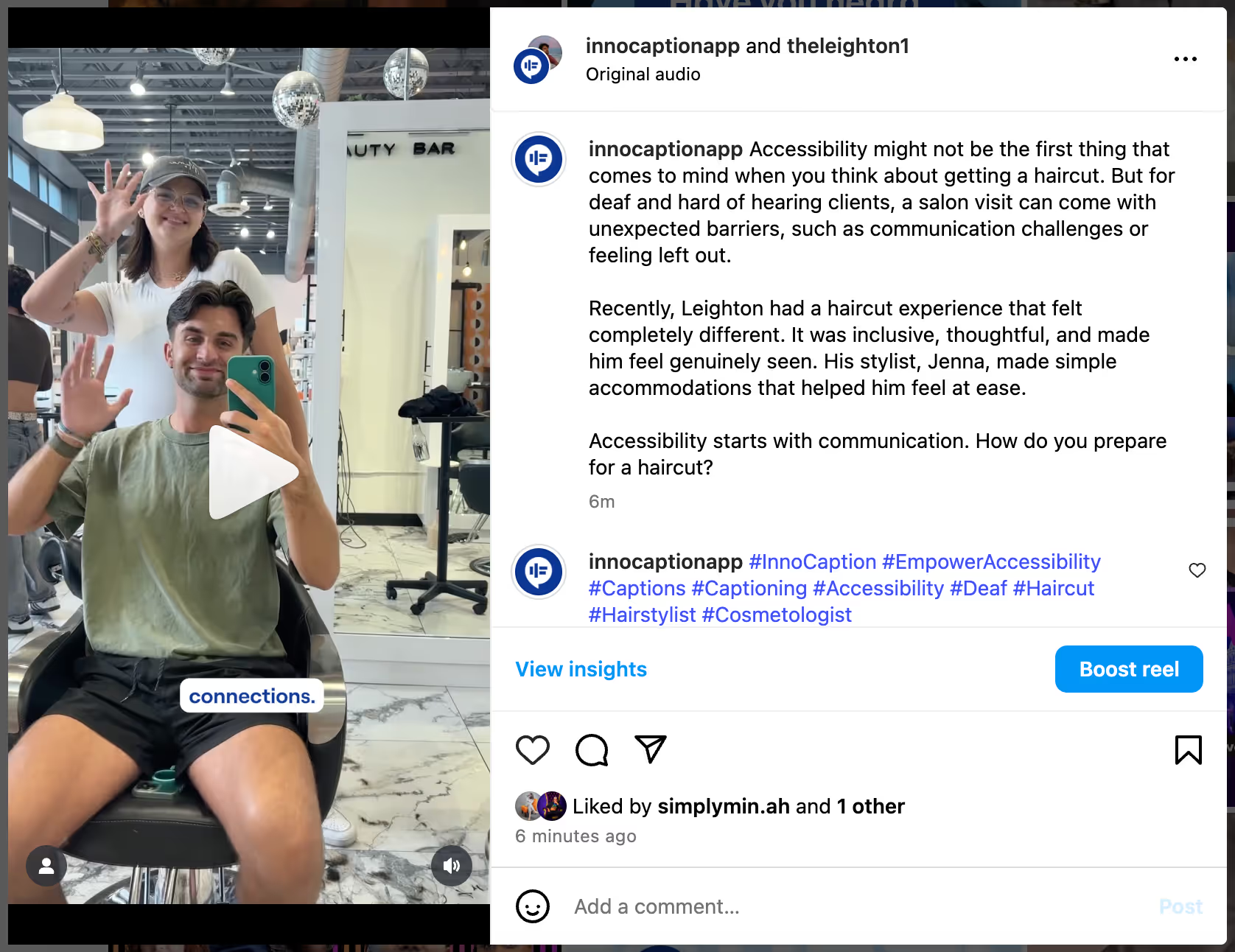
InnoCaption provides real-time captioning technology making phone calls easy and accessible for the deaf and hard of hearing community. Offered at no cost to individuals with hearing loss because we are certified by the FCC. InnoCaption is the only mobile app that offers real-time captioning of phone calls through live stenographers and automated speech recognition software. The choice is yours.
InnoCaption proporciona tecnología de subtitulado en tiempo real que hace que las llamadas telefónicas sean fáciles y accesibles para la comunidad de personas sordas y con problemas de audición. Se ofrece sin coste alguno para las personas con pérdida auditiva porque estamos certificados por la FCC. InnoCaption es la única aplicación móvil que ofrece subtitulación en tiempo real de llamadas telefónicas mediante taquígrafos en directo y software de reconocimiento automático del habla. Usted elige.